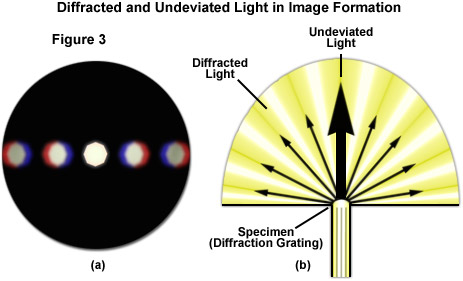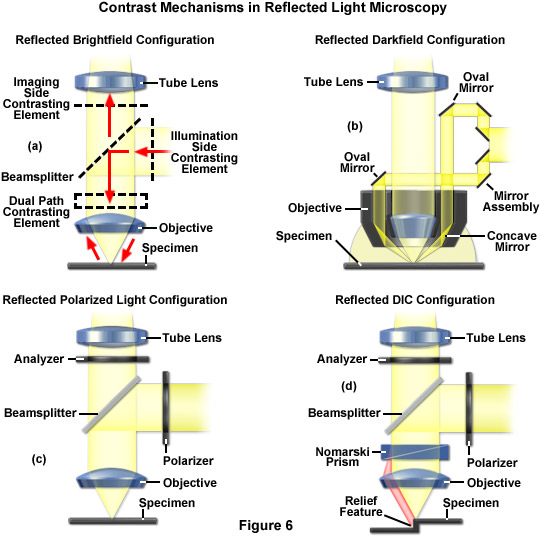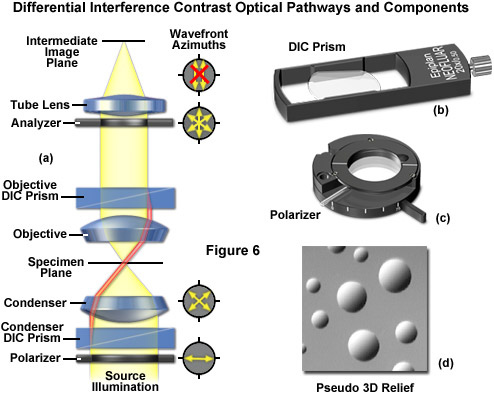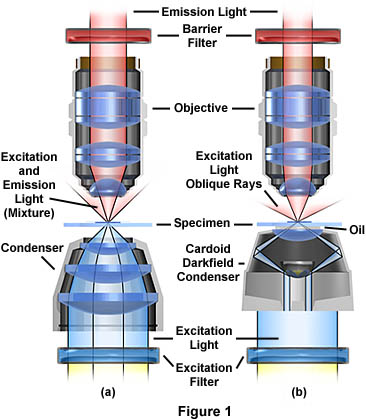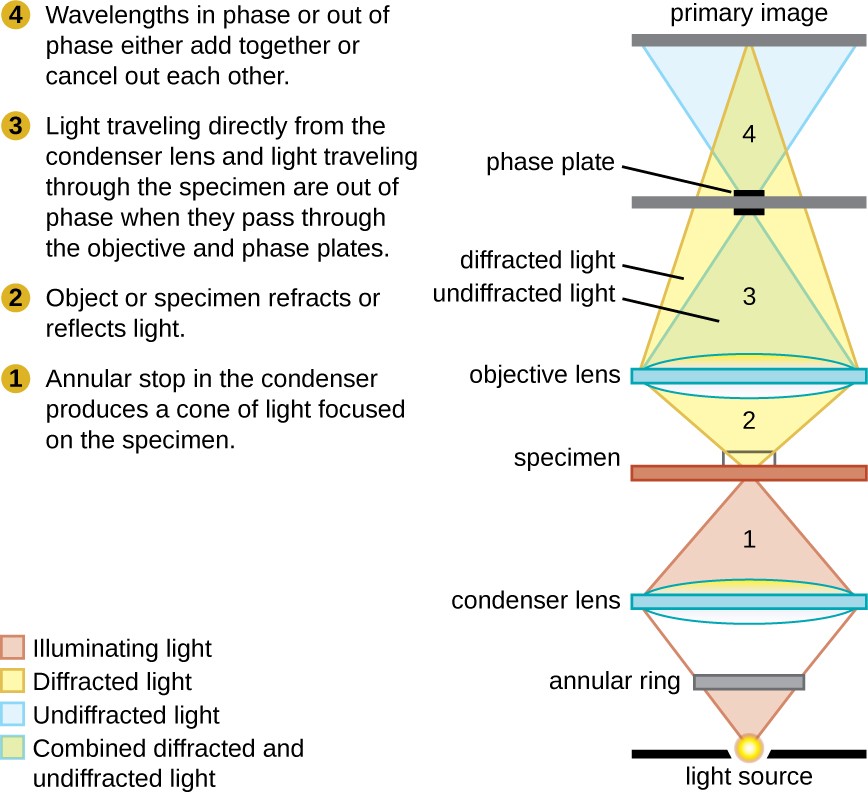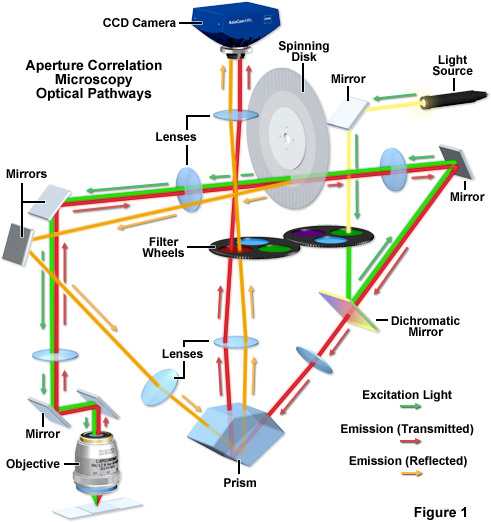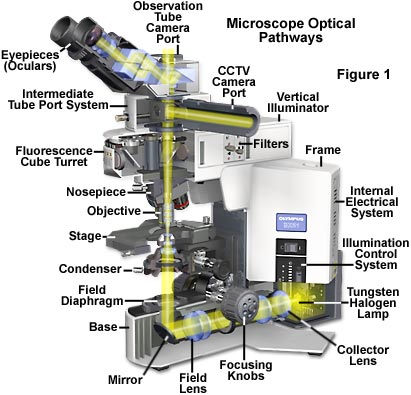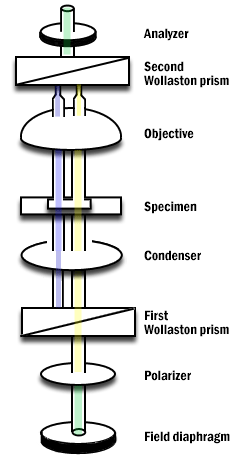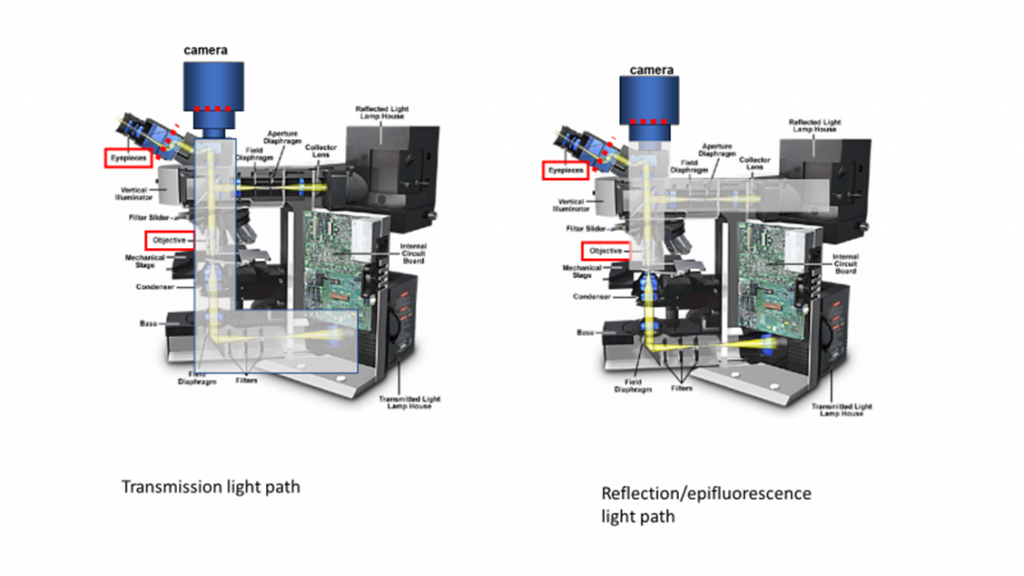To operate the tutorial use the slider bars beneath the microscope to control the aperture of the field diaphragm left slider the aperture condenser diaphragm.
Transmitted light microscopy optical pathways.
A most common light source because of its low cost and long life is the 50 or 100 watt tungsten halogen lamp as illustrated at the base of the microscope diagram in figure 1 which also details the optical pathways in a typical modern transmitted light microscope.
Instructions and a discussion about how to operate this tutorial appear immediately below the window.
Transmitted light microscopy optical pathways.
The term transmitted light when used in optical microscopy refers to any imaging modality where light is passed from the illumination source on the opposite side of the specimen to the objective thus illumination is transmitted through the specimen.
Usually the light is passed through a condenser to focus it on the specimen to get maximum illumination.
Optical pathways in the transmitted light microscope the design of an optical microscope must ensure that the light rays are organized and precisely guided through the instrument.
A typical microscope configured for both types of illumination is illustrated in figure 2 the transmitted light source and optical pathway is not shown in this illustration.
The optical pathway for reflected light begins with illuminating rays originating in the lamp housing for reflected light the upper housing in figure 2.
It is intended that.
This tutorial explores the optical pathways in a transmitted light microscope.
Optical microscopes are the oldest design of microscope and were possibly invented in their present compound form in the 17th century.
Background of similar intensity.
Transmitted light microscopy is the general term used for any type of microscopy where the light is transmitted from a source on the opposite side of the specimen to the objective lens.
The optical microscope also referred to as a light microscope is a type of microscope that commonly uses visible light and a system of lenses to generate magnified images of small objects.
Illumination of the specimen is the most important controllable variable in achieving high quality images in microscopy critical photomicrography and digital imaging.
The optical pathway for reflected light begins with illuminating rays originating in the lamp housing for reflected light.
Basic optical microscopes can be very simple although many complex.
This tutorial explores the optical pathways in a transmitted light microscope.
Instructions and a discussion about how to operate this tutorial appear immediately below the window.
There are numerous light sources available to illuminate microscopes both for routine observation and critical photomicrography.
